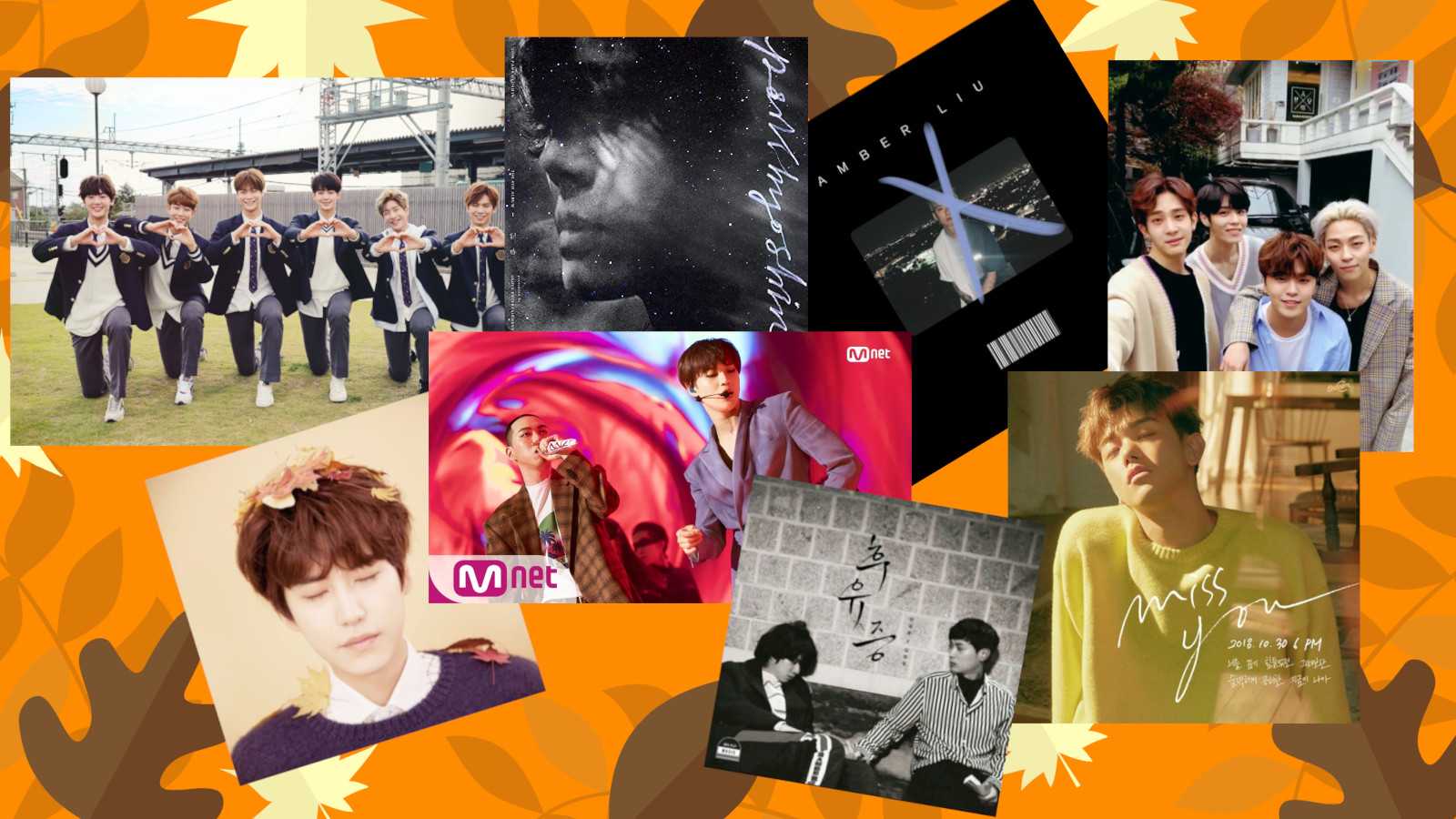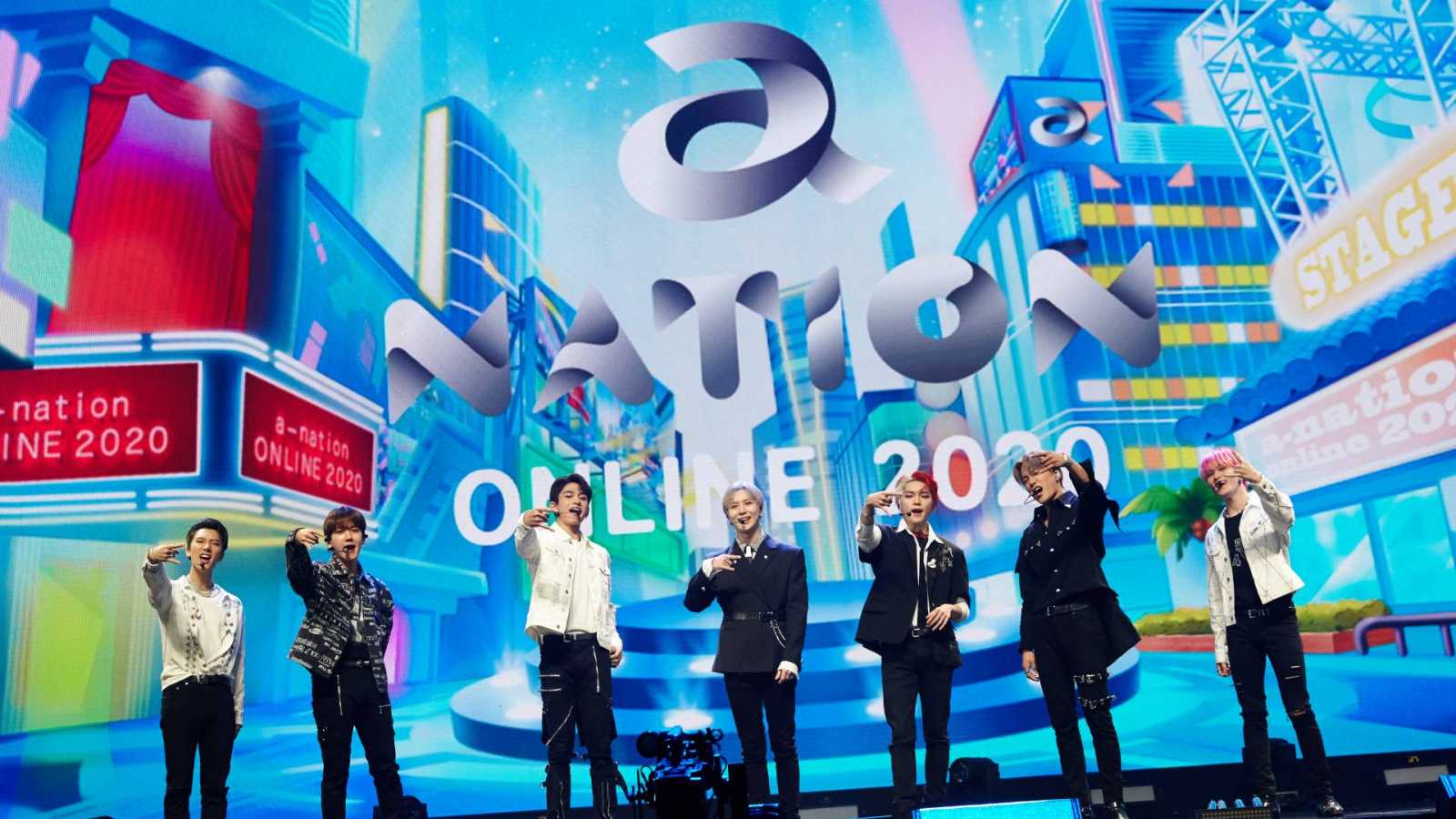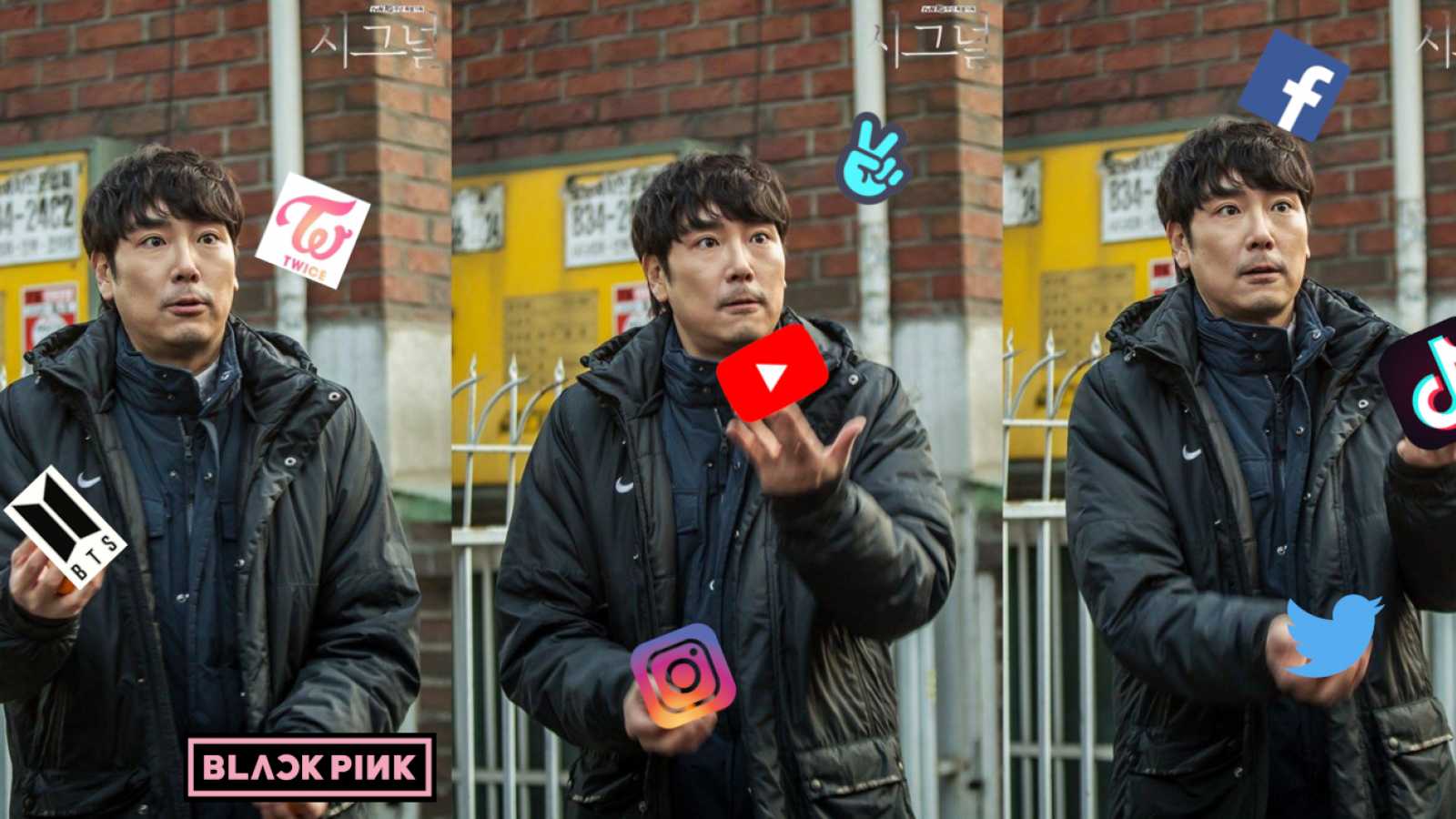Through time, music has had a lot of labels which define look and sound. From these “umbrella” genre labels we’ve seen a myriad of sub-labels which carved out a niche sound or clothing trend. These classifications have gone beyond internationally accepted terms, to ones which may vary from not only from country and culture but between individual people. Consider the term “Johnny’s.” Once used to describe the artists who belong to the Japanese label Johnny’s Entertainment, the very word “Johnny’s” now immediately brings to mind an artist with a specific sound and look - it even seems acceptable when trying to describe a similar band to say they remind us of a “Johnny’s.”
Yet despite all these labels and classifications, one style in the music world still remains clouded with confusion: visual artists. What
is “visual?” Is it glam rock? Is it visual kei? Is it emo or gothic? Or is it simply as its name describes - visual? Today we will step out of the box and look at the core roots of visual kei to uncover some of the details of this music enigma.
Defining Visual-Styled Music
Music has been utilizing costumes and makeup for centuries, dating back to operas and early musicals. During the birth of the blues, Motown and the popular acts of the 1960’s such as
The Beatles, matching and complementary clothing helped to build cohesion and make a stronger performance. Yet in the early 1970’s, visuals took on an entirely new meaning, becoming an element so built into the music that without it, it simply wasn’t the same. It was during this time that a new label was born: glam rock.
With its inception in the United Kingdom, glam rock, in its barest form, can be defined as a style of music whose performers wear flamboyant costumes, wild makeup and teased hair. Due to its wild usage of glitter, it has sometimes also been called “glitter rock.” With its artists often wearing costumes that border on androgyny, glam rock has been likened to an androgynous style; this remains true in much of the costumes in visual kei.
1 Over time, like all music styles, glam has evolved. Starting in the mid-1990’s, a new era of glam was born, which the authors of
Visual Kei no Jidai have called “neo-glam,” a term which has been used to describe artists such as
Marilyn Manson.
Just years after glam rock took off, gothic rock was also born. Inspired by early English punk, the music soon took a much darker turn, and today is infused with dark clothing and visuals, deeply introspective or morbid lyrics and typically a harder musical composition. Today gothic rock has developed a series of sub-genres and is a widely accepted visually-styled music.
2
With glam and gothic rock gradually changing, disagreement has arisen whether artists are “glam” and “gothic” or not because they utilize makeup and costumes. This bears the question, where does “glam” and “gothic” stop and “visual” begin? How can we define one artist “glam,” another “gothic” and yet another “visual kei” when they all are essentially doing the same thing?
At the Heart of All That is “Visual”
Looking at visual styles across the globe, it becomes exceedingly difficult to determine which type of visual group some artists fall under, or if they can all be classified beneath the same label. For some visual kei artists, this same complication exists.
It is easy to look at a group like
Combichrist, an American
Aggrotech metal group, and immediately associate them with “goth rock” - their heavy usage of dark makeup and costuming bears no resemblance to anything glamorous, but is much more in line with that of other gothic styled artists, such as the Swedish goth group,
Deathstars. Yet in many cases, the classification of an artist is not so clear cut.
While glam rock is the true grandfather of visual rock music, today costumes and makeup are deeply entrenched in multiple rock sub-genres. We have seen visuals utilized in everything from pop and alternative rock to death metal, gothic, industrial and electronic music for decades, with many bands using it today across the world. The industrial music sub-genre “Neue Deutsche Härte” translated from German, the “New German Hardness,” is another which sometimes utilizes visuals for a strong performance. The term was coined by German journalists after a
Rammstein release, and today is the label for dozens of visual, non-visual and gothic German bands.
3
It is important to remember that there are many visual artists who don’t perform solely rock, and this makes labeling them much harder. Take for example,
PANIC! At the Disco, My Chemical Romance, Tokio Hotel, and
Lady Gaga. All four have heavily used makeup and various costumes, with
Lady Gaga taking the visuals to a new dimension, both on and off stage. There is no denying these artists are “visual,” but do they qualify as “glam”?
While
PANIC! and
My Chemical Romance are alternative-rock, their visuals have led them to be called “emo,” a term which both bands have spoken out against. Both refuse to be accepted under the name, going so far as to calling emo “bullshit” and stating that their music holds no similarities to that of emo sounds, regardless of their look.
4 It is irrefutable to say that their inspirations do not have some glam rock elements, but it is hard to look at these artists today and label them “glam rock,” which simply leaves us where we started: with “visual.”
Lady Gaga has stirred up debates since her rise to fame, with fans calling her everything from an idol to a copycat, and many critics claiming she has ripped off the iconic visual pop artist
Madonna.
5 While her music ranges from pop to electronic, it isn’t the music who makes her what she is, it is her visuals. Once thing is certain: her visuals are a part of her and without it, she would not be
Lady Gaga.
German rock group
Tokio Hotel is a special case, having been noticed specifically by visual kei fans, with speculation swirling about whether or not the group was a western version of visual kei. While the band has never dispelled this label, their recent collaboration in SHOXX magazine with
kanon of
An Cafe only strengthened the supposed connection.
6 The question of where this group falls has sparked endless debates
7, even some visual kei artists themselves don’t quite know where to classify
Tokio Hotel: When asked their thoughts on the group,
ShuU of
girugamesh explained, “I heard from German visual kei fans that they are questioning
Tokio Hotel’s visuals. The good thing is that they are giving visual influence to other countries. [..] I heard they have visual kei influences but, they’re not really popular in Japan yet, so it’s hard to tell [if they are visual kei.]”
8
Another prime example of label confusion is the German band
Cinema Bizarre. With several members having Japanese stage names, the band designed their style around the look of visual kei, with each member openly enjoying the style, yet overseas media have labeled them “glam rock,” despite the visual kei influences.
9
Regardless of what
Tokio Hotel and
Cinema Bizarre’s label truly is, the outspokenness by fans and heated debates sparked over whether or not the band is visual kei brings about an entirely new issue: is visual kei
solely Japanese?
Visual Kei is … Japanese?
Much like the Japanese emulated glam rock which resulted in the genre visual kei, others around the world have taken notice and have in turn, tried to emulate visual kei. Well before western attempts, imitation visual kei was already alive in East Asia, with one of the forerunners of the trend being
Silver Ash, in China, as well as Korean artists, the
TRAX and
EVE.
Over the years, American and European bands have tried their hand at visual kei, and fans have seen an increase of non-Japanese bands who pointedly classify themselves as “visual kei.” Some of these bands write and sing Japanese lyrics, but others simply emulate the visuals while singing in their native tongue.
While this imitation by Westerners is a clear movement towards mainstream acceptance, it has come heavily under fire by western visual kei fans. One Italian fan said, “Visual kei is
Japanese. These western bands posing as visual kei are just ridiculous.”
10 This opinion is not alone, and many western non-Japanese visual kei bands find themselves not only under criticism of being “fake,” but also have a harder time drawing a crowd than a Japanese visual kei artist would, as well as difficulty marketing to a mainstream audience since their target audience is so specific.
The western visual kei bands, however, are not the only musicians being criticized: westerners who participated in Japanese visual kei bands have also received scorn from overseas fans. One example of this was
Jimi Aoma, a Californian, now ex-bassist for the visual kei band
Chemical Pictures. Fluent in Japanese,
Aoma has lived in Japan for a number of years, and was well-received into visual kei by bands and Japanese fans alike. When asked about what negativity he had experienced,
Aoma replied, “The vast majority of criticism I received was from western people. They said I was ugly, they said I was an idiot or a jerk, they were all-in-all highly against the idea of a non-Japanese in a Japanese band.”
11
Aoma’s experience is not alone, and it is problems like this that prevent visual kei from being properly disseminated into society and integrated into a mainstream music style. One American fan put it succinctly: “There is no scene outside of Japan unless local bands are allowed and encouraged to thrive. Visual kei has its origins in local bands in Japan emulating foreign bands. If the Japanese youth of the 80’s just ignored all of them for ‘not being American’ then there would be no visual kei now, period.”
12
The visual kei artists themselves also have had conflicting views on visual kei. While
MIYAVI said he thought that “Jrock was original Japanese culture,”
Isshi of ex-
Kagrra, had a different idea, saying, “Originally wearing makeup and costumes was an influence drawn from American rock bands. Then we interpreted that American culture into our own, [creating] visual kei."
13
When asked if they felt visual kei was distinctly Japanese,
girugamesh had an interesting response: “Visual kei started from bands such as
KISS and
Marilyn Manson’s glam rock make-up influence. When people start calling bands in other countries “visual kei,” it becomes very difficult to distinguish.”
The criticism of visual kei’s expansion outside of Japanese-only musicians does not appear to be a dilemma which lies with the entirety of the visual kei fanbase, but specifically the overseas fandom. As with the case of
Jimi Aoma, his presence in the Japanese scene was well-received, and he noted in his interview that “In three years, I have only had one Japanese person say anything even remotely mean.”
14 A cultural preservation role-reversal appears to be taking place, as the original fans of this genre, the Japanese, seem mostly open and agreeable not only to the globalization aspects of this music style but also the scene’s transformation over time, yet the overseas fans are focused on keeping it true to its Japanese “roots.”
15 Even today, only 53% percent of fans said they would listen to a non-Japanese visual artist emulating the style.
16 Without the universal acceptance of visual kei fans, there is little hope for the general public to accept a music style which is condemned by some of its own following.
Fashion? Music? Defining What is “Visual Kei”
There has been constant disagreement as to whether visual kei is a music style or a fashion style.
17 We have to consider that if the visuals were stripped away, visual kei would simply cease to exist and would then fall under other musical categories, ranging from pop-rock to alternative and death metal.
When a visual kei artist begins to shed their costumes and makeup, they in turn begin to shed that label. While once being “visual kei” is a haunting term which most artists cannot wholly escape, there are those which are successful. Artists such as
DIR EN GREY,
GLAY and
L’Arc~en~Ciel are rarely termed as currently being “visual kei;”
DIR EN GREY’s own Wikipedia page cites them as “Japanese metal” and being “originally visual kei.”
18
Stepping outside of visual kei and looking at other visual styles, such as glam, gothic and emo, if you strip away the costumes, the makeup and the extravagant stage setups, you’re again left with just one element: the music. Comparing each of these different styles, the fashion indeed changes, from the bubbly pleasant look of oshare kei, to the downright frightful appearance of gothic death metal. This makes it difficult to refute the fact that “visual” is indeed a conscious fashion choice. Despite these artists all sharing one common element, it is simply impossible to place all of these artists under one “umbrella” music genre.
Visuals and Mainstream Music Acceptance
It is also notable that most western visual musicians have been accepted by mainstream audiences worldwide while visual kei still has not; some visual kei artists have even cited
Marilyn Manson as an inspiration.
19 Yet fans of glam rock, visual styled music and visual kei have been found to listen to one style but not necessarily embrace the other.
Tokio Hotel is a clear example of this: fans openly have admitted to listening to visual kei but refusing to accept
Tokio Hotel, and vice versa.
20
While the visuals are surely the source of some tension preventing mainstream popularity, as is the case in Japan due to its non-conforming societal nature, they cannot be the sole cause; if the glamour is removed, the styles would not exist. Therefore, the core cause for lack of mutual popularity among both genres must lay elsewhere.
There has been a lot of speculation on whether the language barrier is the main hurdle that visual kei must conquer, but doubt can still be cast on this theory.
Rammstein and
Tokio Hotel are just two among many that have risen to fame utilizing their native language. In particular,
Rammstein’s
Du Hast had received heavy American airplay on the radio and television in the late 1990’s and reached twentieth place on the US Billboard Charts.
21 It is important to recall that both did have bilingual releases, but their overall achievements prove that non-English language bands can indeed succeed in the international mainstream music world.
Summary
Once we explore the world of visual inspired music, it becomes clear how muddied the waters get when labels are liberally applied to any artist who wears a costume and makeup; it becomes even more confusing when we try to classify them to a specific type of visual. In the end, all roads in visual styled music inevitably lead back to the influence of one element: fashion.
Join us next week, when we explore the current market for visual kei overseas.
_______________________________________________________________
[1] "Glam Rock", last modified 2011.
[2] "Gothic Rock", Wikipedia, last modified June 12, 2011.
[3] "Neue Deutsche Harte", Wikipedia, last modified June 1, 2011.
[4] "Panic! At The Disco Declare Emo "Bullshit!" ", NME, October 18, 2006, accessed June 15, 2011; Darryl Smyers. "My Chemical Romance Shed Their Emo Roots" ", Dallas Observer, May 19, 2011, accessed June 15, 2011; "My Chemical Romance Brand Emo Shit", NME, September 20, 2007, accessed June 15, 2011.
[5] "Is Lady Gaga's Born This Way a Rip-Off of Madonna Classics?", E! Online, February 13, 2011, accessed June 15, 2011.
[6] "Tokio Hotel X Kanon (An cafe) in SHOXX March 2011", Tokio Hotel Indonesia, January 31, 2011, accessed June 15, 2011.
[7] "Do You ThinK Tokio Hotel is Visual Kei?", Facebook, last modified 2011; a href="http://en.wikipedia.org/wiki/Category_talk:Visual_kei_musicians" target="_blank">"Category Talk: Visual Kei Musicians", Wikipedia, last modified 2008; "Collaboration Discussion: Tokio Hotel America", last modified 2008.
[8] "Interview with Girugamesh in Fairfax, Virginia" JaME, April 29, 2011, accessed June 15, 2011.
[9] “TBE Features: Cinema Bizarre, Visual Kei influenced band”, last modified April 4, 2009, accessed June 21, 2011.
[10, 12,16,20] “Globalizing Visual Kei Survey”, last modified March 11, 2011.
[11,14] Jimi Aoma, E-mail interview with author, March 10, 2011.
[13,19] IMF (2007.) “Globalizing Visual Kei Survey”. [video] Retrieved April 20, 2011.
[15 Japanese and overseas fans, e-mail interviews to author, February 1 to March 25, 2011
[17] "Visual Kei", Wikipedia, last modified May 28, 2011.
[18] "Dir En Grey", Wikipedia, last modified June 16, 2011.
[21] "Du Hast", Wikipedia, last modified June 14, 2011.



















